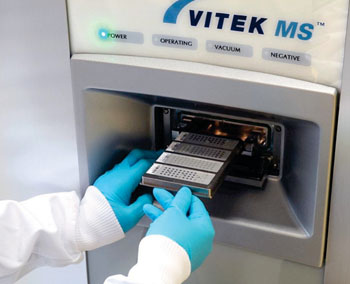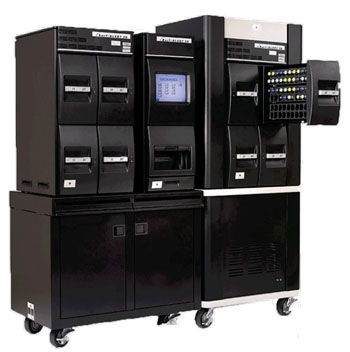Rapid Detection in Blood Cultures of ESBL-Producing Enterobacteriaceae
By LabMedica International staff writers
Posted on 05 Mar 2015
Matrix-assisted laser desorption ionization time-of-flight (MALDI-TOF) mass spectrometry (MS) technology has been used directly with blood cultures and was found to help guide clinical management of bacteremia caused by gram-negative bacteria (GNB).Posted on 05 Mar 2015
Resistance to broad-spectrum cephalosporins is spreading rapidly among Enterobacteriaceae, mostly related to acquisition of extended-spectrum β-lactamases (ESBLs) and ESBL-producing Enterobacteriaceae (ESBL-E) are usually resistant to most β-lactams except cephamycins and carbapenems.
Microbiologist at the Institut National de la Santé et de la Recherche Médicale (Le Kremlin–Bicêtre, France) and their European colleagues studied a single blood culture positive for GNB from each of 245 hospitalized patients. They performed antibiotic susceptibility testing (AST) by the disk diffusion method using bacterial colonies grown from blood cultures and used the double-disk synergy test (DDST) for the phenotypic detection of ESBL producers.
Positivity of blood cultures was detected by using the BacT/Alert system (bioMérieux; La Balme-les-Grottes, France). After obtaining Gram stain results, they tested the blood cultures positive for GNB directly for ESBL-E by using the ESBL Nordmann/Dortet/Poirel (NDP) test and species identification by using the bioMérieux Vitek MS MALDI-TOF MS technique. They also used molecular biology techniques to identify the ESBL genes using polymerase chain reaction (PCR) to amplify the DNA.
The 245 cases of bacteremia were attributed to Enterobacteriaceae (86.1%), nonfermentative GNB (12.7%), and anaerobic GNB (1.2%). Escherichia coli was the predominant enterobacterial species (55.9%); the next most prevalent were Klebsiella pneumoniae (17.5%) and Enterobacter cloacae (9.5%). Pseudomonas aeruginosa (24/31, 77.4%) was the predominant non-fermentative GNB. Anaerobic GNB belonged to the Bacteroides fragilis group (Bacillus fragilis and B. vulgatus). The team identified bacteria directly from blood culture using the MALDI-TOF technique for 237 (96.7%) isolates and the results corresponded to bacterial identification after culture.
The authors concluded that the ESBL NDP test directly performed on positive blood cultures is a reliable technique to identify ESBL-E within 30 minutes. A strong correlation between intermediate susceptibility or resistance to cefotaxime and positivity of the ESBL NDP test was observed. The inexpensive ESBL NDP test might be implemented worldwide. It may optimize rapid choices of antibiotics for treating bloodstream infections. It may also contribute to avoidance of overuse of carbapenems. Finally, a rapid detection of ESBL-E coupled with bacterial species identification will enhance identification of ESBL in species likely to be the source of nosocomial outbreak and facilitate implementation of a rapid strategy for containment. The study was published in the March 2015 issue of the journal Emerging Infectious Diseases.
Related Links:
Institut National de la Santé et de la Recherche Médicale
bioMérieux















